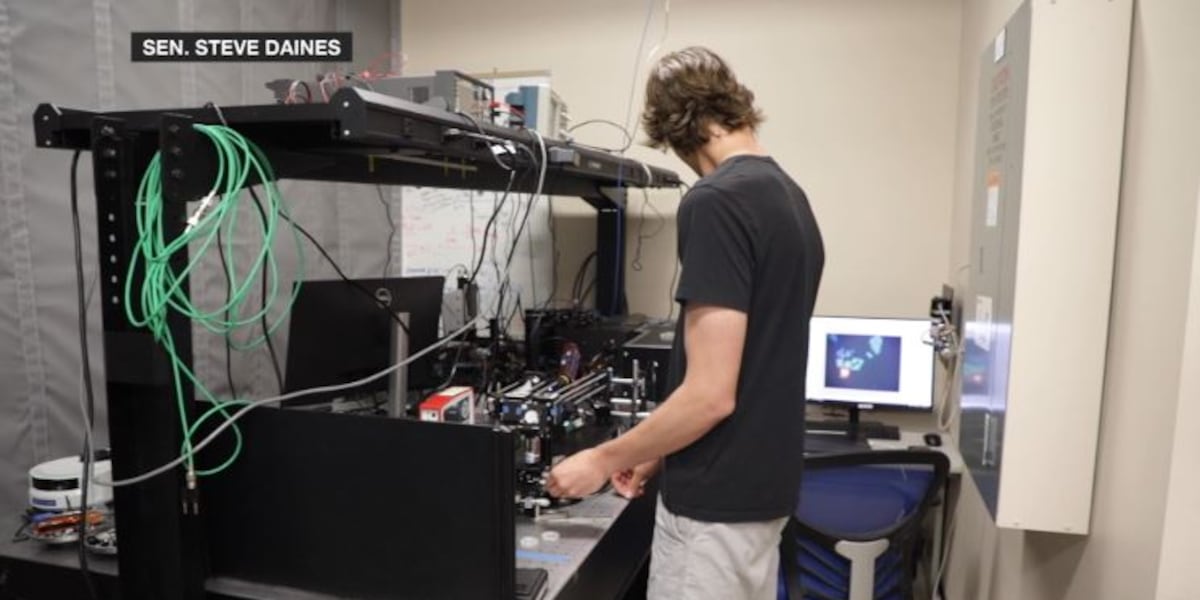North Dakota
Letter: Oppressive regime is driving people out of North Dakota

As a former resident of North Dakota, I am deeply concerned about the current state of North Dakota. Recently, I asked my two daughters if they would ever consider moving back to North Dakota, and both replied with a resounding “no.” When I asked them why, they cited the right-wing extremism that has taken hold of our state. As a father, I am proud of my daughters for their success and their education, but it breaks my heart that they have lost touch with their friends who have become indoctrinated by Fox News.
The oppressive regime that has taken over North Dakota has made life unbearable for women and anyone who does not conform to their narrow-minded beliefs. Discrimination has become state-sanctioned and our schools have become places where burning books is seen as acceptable. It is a far cry from the progressive and open society that my family and I moved to in 1976.
North Dakota used to be a place where intellect was respected and celebrated, but now it seems that education is viewed as a threat by those in power. It is shameful that the new motto of the Republican Party seems to be “education just confuses people.”
The people of North Dakota need to take a hard look at themselves and the Republican Party and make changes before it is too late. We cannot allow North Dakota to become a place where only the most extreme voices are heard and where discrimination is the norm. I implore our leaders to work towards creating a more inclusive and open society, where all voices are heard and respected.
Mike Quinn is a resident of Payson, Ariz.
This letter does not necessarily reflect the opinion of The Forum’s editorial board nor Forum ownership.

North Dakota
Tech hubs in Montana, North Dakota receiving federal grant funds

BISMARCK, N.D. (KFYR) – More federal grants have been announced to support regional technology hubs in Montana and North Dakota.
The Headwaters Tech Hub in Montana will focus on photonics – the science of light manipulation and detection and quantum computing.
The Economic Development Administration provided 41 million dollars to support innovation in those fields.
“I know it is going to create good paying jobs in our state and give Montana’s top-notch entrepreneurs the tools they need to solve the world’s most pressing tech and national security challenges,” said Senator Jon Tester, D-MT.
“Montana is leading the country in tech innovation, which will help us win the race against China, create good-paying jobs here at home and further boost our economy. From optics and photonics to quantum computing, I am grateful to help advance Montana’s ability to contribute even further to the important research, development, and jobs that will help strengthen our national security and help the country stay competitive globally,” said Senator Steve Daines, R-MT.
Around 1.5 million dollars of that amount will go towards the Grand Farm in North Dakota, which partners with the Tech Hub.
The autonomous farm is looking at how photonic sensing systems can work with drones and robotics in the agriculture industry.
“It shows how we continue to leverage more resources as we drive forward and lead the nation in precision agriculture,” said Senator John Hoeven, R-ND.
The designation was awarded to Montana in October 2023 as part of the CHIPS and Science Act, which created 31 “Tech Hubs.”
The Headwaters Tech Hub consists of a 27-member consortium which includes Grand Farm, Montana State University, The University of Montana, John Deere and RDO Equipment.
Copyright 2024 KFYR. All rights reserved.
North Dakota
Supreme Court ruling bolsters North Dakota cases, AG Wrigley says

Attorney General Drew
Wrigley (R-ND)
By Amy Dalrymple
BISMARCK, N.D. (North Dakota Monitor) – North Dakota Attorney General Drew Wrigley said a recent U.S. Supreme Court decision curbing the regulatory power of the executive branch could give the state a boost in its roughly 30 pending lawsuits against the federal government.
The high court’s ruling, released June 28, reverses a 40-year policy that required federal courts to defer to executive branch agencies when interpreting vague laws.
“It’s a long time coming,” Wrigley said of the decision in Loper Bright Enterprises vs. Raimondo. “This was an unwise doctrine when it was first pronounced decades back.”
The practice — often called “Chevron deference” after the Supreme Court 1984 ruling that created it — applied to how federal agencies enacted regulatory marching orders from Congress.
When Congress passes a law directing an agency to regulate something, its instructions are seldom 100% clear. The court decided in the 1984 case that federal agencies could use their own expertise to fill in the blanks in areas where the law is ambiguous.
The idea was that the agencies would know best how to interpret the will of Congress, and that the doctrine would protect them from excessive legal challenges.
The Supreme Court’s recent decision revoked this power. Now, it’s up to federal judges to interpret gray areas in legislation.
The ruling is expected to lead to significant regulatory changes as the federal government implements the new standard.
Wrigley said he expects the ruling to be largely positive for North Dakota’s spate of lawsuits against the federal government — which includes cases challenging regulations passed by the Environmental Protection Agency, Department of the Interior, Bureau of Land Management, Department of Education and more.
“This decision has taken away power from nameless, faceless bureaucrats,” he said.
The ruling could also have major impacts on the federal government’s relationships with Native tribes, said Tim Purdon, a former U.S. Attorney for North Dakota who represents tribal communities as a private practice lawyer.
“There are lots of regulations that the Bureau of Indian Affairs and the Department of Interior and places like that have historically interpreted,” he said.
Some critics of the Chevron deference are hopeful its ouster will lead to more consistency in the executive branch.
Under Chevron, the regulatory environment could swing from one extreme to the other when new presidents took office, said Paul Traynor, an assistant professor for the University of North Dakota Law School whose specialties include insurance and corporate law.
“It kind of put both the country and people in sort of a whipsaw,” he said.(His brother, Dan Traynor, is a U.S. District Court Judge for the District of North Dakota.)
The Supreme Court voted 6-3 to overturn the doctrine, with the court’s three liberal judges dissenting.
The court’s opinion, authored by Chief Justice John Roberts, states that reversing Chevron is consistent with the intent of the U.S. Constitution, which gives the federal courts the power to interpret laws.
“The Framers … anticipated that courts would often confront statutory ambiguities and expected that courts would resolve them by exercising independent legal judgment,” Roberts wrote.
The court’s liberal justices countered that federal agencies are better suited to make sense of the instructions Congress gives them.
“Congress knows that it does not — in fact cannot — write perfectly complete regulatory statutes,” Justice Elena Kagan wrote in her dissent. “It knows that those statutes will inevitably contain ambiguities that some other actor will have to resolve, and gaps that some other actor will have to fill. And it would usually prefer that actor to be the responsible agency, not a court.”
The North Dakota courts also have a history of deferring to state agencies’ interpretation of the law, according to Chief Deputy Attorney General Claire Ness.
The question remains as to whether the Supreme Court’s decision will lead North Dakota to reexamine the level of regulatory power it gives those agencies.
“I think that our state regulators … are going to have to very seriously look at the grant of authority that they have been delegated by the Legislature,” Traynor said.
The decision to overturn Chevron comes just two years after another landmark Supreme Court ruling that curbed the executive branch’s regulatory power, commonly referred to as West Virginia v. EPA. In that decision, the Supreme Court struck down an EPA rule that regulated carbon dioxide emissions by power plants. North Dakota was also a plaintiff in the case.
North Dakota
John Wheeler: Today is the anniversary of the Fargo and North Dakota temperature records

FARGO — On July 6, 1936, the temperature at the Moorhead office of what was then called the U.S. Weather Bureau reached a sweltering 114 degrees. The Weather Bureau, now the National Weather Service, was housed at that time in what was the Federal Building on Main Avenue in Moorhead, in what is now the Rourke Museum. The official weather recordings for Fargo-Moorhead were made at that office in Moorhead from 1881 into the early 1940s. Hector International Airport, however, had started making its own weather recordings in the 1930s, so there is a period of overlap.
Interestingly, the temperature at the airport that afternoon was 115 degrees, but that figure is not in the Fargo climate record because the official Fargo-Moorhead weather station was the one in Moorhead at the time. So the station record high temperature for Fargo was actually measured in Moorhead. The North Dakota state temperature record was set in Steele at 121 degrees that same day.
John Wheeler is Chief Meteorologist for WDAY, a position he has had since May of 1985. Wheeler grew up in the South, in Louisiana and Alabama, and cites his family’s move to the Midwest as important to developing his fascination with weather and climate. Wheeler lived in Wisconsin and Iowa as a teenager. He attended Iowa State University and achieved a B.S. degree in Meteorology in 1984. Wheeler worked about a year at WOI-TV in central Iowa before moving to Fargo and WDAY..
-

 News1 week ago
News1 week agoToplines: June 2024 Times/Siena Poll of Registered Voters Nationwide
-

 World1 week ago
World1 week agoBolivia foils coup attempt: All you need to know
-

 Politics1 week ago
Politics1 week agoThe many faces of Donald Trump from past presidential debates
-

 World1 week ago
World1 week agoTension and stand-offs as South Africa struggles to launch coalition gov’t
-

 Fitness1 week ago
Fitness1 week agoExercise may lower the ALS risk for men — but not women: new study
-

 Politics1 week ago
Politics1 week agoSupreme Court rules to allow emergency exceptions to Idaho's abortion ban
-

 News7 days ago
News7 days agoVideo: How Blast Waves Can Injure the Brain
-

 News1 week ago
News1 week agoSupreme Court denies Steve Bannon's plea to stay free while he appeals



















